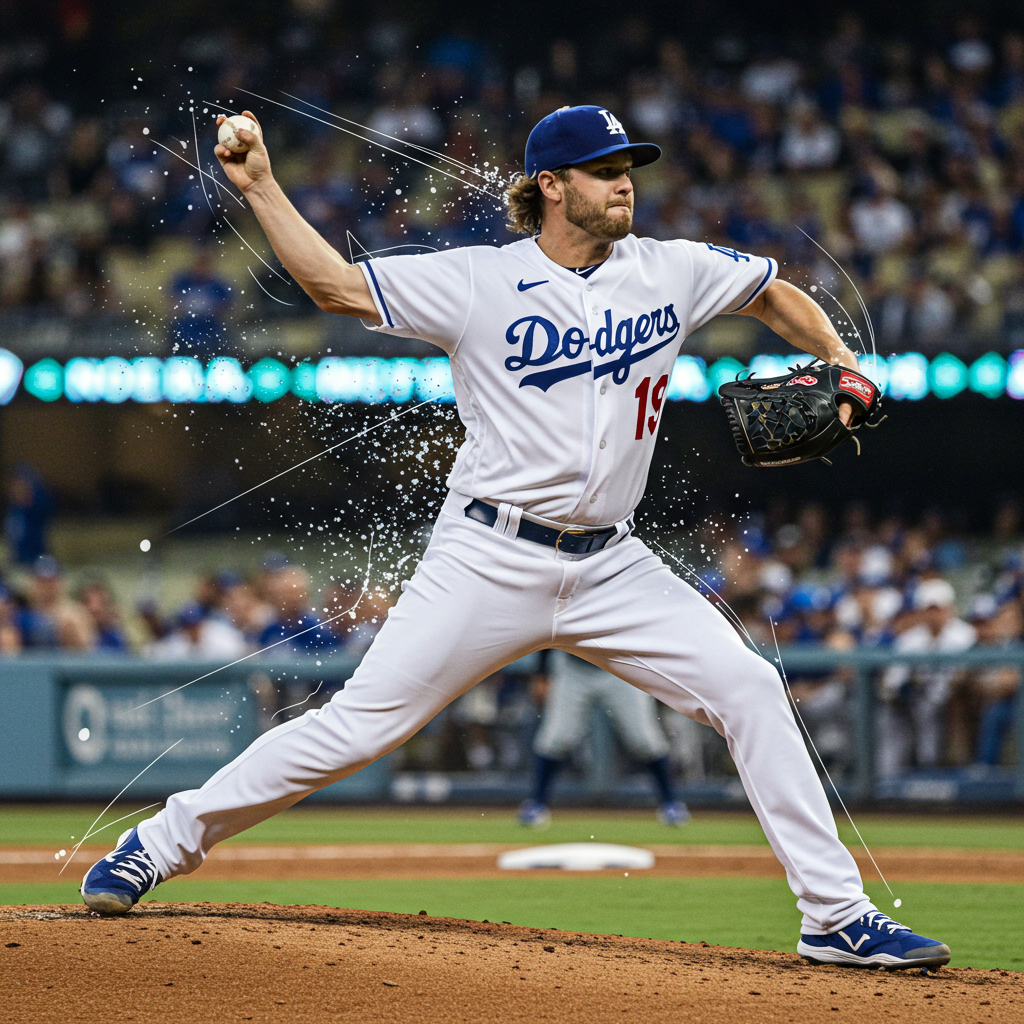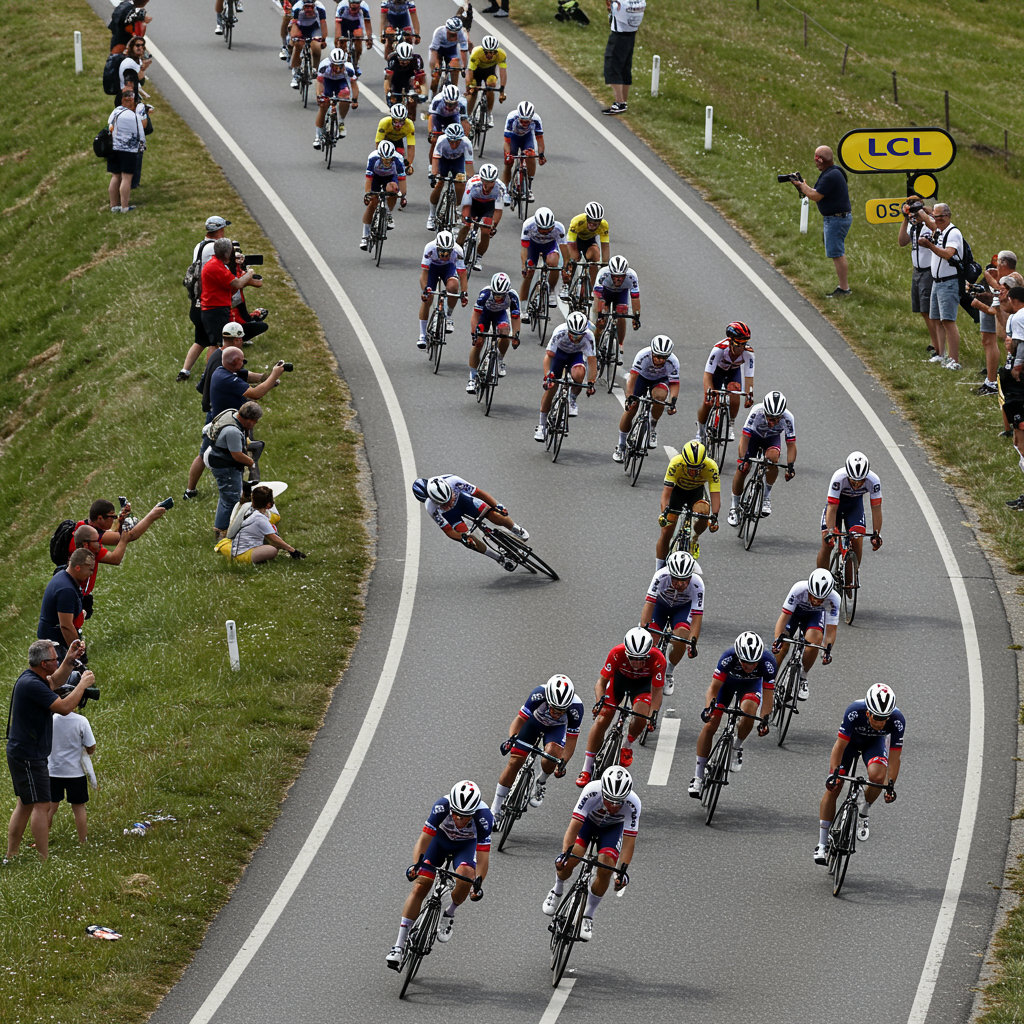Los Angeles Dodgers legend Clayton Kershaw recently carved his name deeper into baseball history. On Wednesday, July 2, 2025, facing the Chicago White Sox at Dodger Stadium, Kershaw recorded his 3,000th career strikeout. This monumental achievement placed him in one of the sport’s most exclusive fraternities: the 3,000-strikeout club.
Joining this group makes Kershaw just the 20th pitcher in Major League Baseball history to reach the milestone. The historic punchout came in the sixth inning when he struck out Vinny Capra. The home crowd erupted, showering the veteran left-hander with a well-deserved standing ovation as he took a curtain call.
This achievement is significant for several reasons. Kershaw became only the fourth left-handed pitcher ever to reach 3,000 K’s. Remarkably, he is also just the third pitcher in MLB history to accumulate all 3,000+ strikeouts while playing for a single franchise, joining the iconic ranks of Walter Johnson (Senators) and Bob Gibson (Cardinals). His career with the Dodgers began in 2008; his first strikeout was Skip Schumaker. Now, 18 years later, he stands as the franchise’s all-time strikeout leader and is closing in on Don Sutton’s team record for wins.
The 3,000-strikeout club is a far more exclusive circle than the 3,000-hit club, which boasts 33 members. Before Kershaw, only 19 pitchers had reached the mark. A staggering 15 of those 19 are enshrined in the Baseball Hall of Fame, with the two most recent additions before Kershaw – Max Scherzer (2021) and Justin Verlander – considered future Cooperstown locks. Kershaw’s entry further solidifies his own undeniable Hall of Fame credentials, adding to a resume already packed with three Cy Young Awards, an MVP, 10 All-Star selections, and two World Series titles.
Evaluating Pitching Greatness in a New Era
Ranking pitchers across different eras is challenging. Traditional wins and losses don’t always capture a pitcher’s true effectiveness, especially with modern bullpen usage. To provide a unique perspective on where pitchers in the 3,000-strikeout club stand, one ranking method utilizes a modified “game score” analysis and “Fibonacci Win Points” (FWP).
This approach analyzes every start since 1901. It awards a “win” or “loss” based on which starting pitcher had the higher game score in a head-to-head matchup, regardless of the team’s final score. FWP combines these game score wins and winning percentage into a single metric to rank pitchers. This method aims to evaluate how consistently dominant a pitcher was in their starts against their opponent, offering a different lens than simple career strikeout totals or traditional W-L records. Let’s look at how the 20 members of the 3,000-K club rank according to this method.
The 3,000-Strikeout Club Ranked by Fibonacci Win Points (FWP)
Here is the ranking of the 20 pitchers with 3,000 or more career strikeouts, based on their FWP score:
- Roger Clemens
- Randy Johnson
- Walter Johnson
- Greg Maddux
- Nolan Ryan
- Max Scherzer
- Justin Verlander
- Pedro Martinez
- Steve Carlton
- Tom Seaver
- Clayton Kershaw
- Don Sutton
- Ferguson Jenkins
- Gaylord Perry
- Phil Niekro
- CC Sabathia
- Bob Gibson
- Bert Blyleven
- Curt Schilling
- John Smoltz
FWP: 568.8
Strikeouts: 4,672 (3rd all-time)
Game score W-L: 477-230 (.675)
Clemens tops this list, reflecting consistent dominance across his starts. His FWP score leads all pitchers since 1901.
FWP: 532.9
Strikeouts: 4,875 (2nd all-time)
Game score W-L: 421-182 (.698)
“The Big Unit” stands second here. His game score winning percentage is the highest among the top contenders on this list, showcasing his exceptional head-to-head performance.
FWP: 494.7
Strikeouts: 3,509 (9th all-time)
Game score W-L: 437-229 (.656)
The only pitcher in the 3K club to debut before 1959, Walter Johnson’s inclusion near the top highlights his transcendent skill across eras. He reached 3,000 K’s back in 1923.
FWP: 443.3
Strikeouts: 3,371 (12th all-time)
Game score W-L: 453-287 (.612)
Known for his incredible command rather than pure power, Maddux’s high ranking underscores his consistent, long-term effectiveness as a starter, even without elite strikeout numbers relative to others on this list.
FWP: 443.1
Strikeouts: 5,714 (1st all-time)
Game score W-L: 467-306 (.604)
Baseball’s all-time strikeout king. While his FWP is just below Maddux’s, this method gives Ryan a significantly better winning percentage than his traditional record, reflecting his frequent dominance despite playing for various teams over an incredibly long career.
FWP: 385.7
Strikeouts: 3,419 (11th all-time)
Game score W-L: 315-145 (.685)
An active member, “Mad Max” shows elite game score winning percentage, placing him high among his peers. He reached 3,000 K’s in 2021.
FWP: 385.0
Strikeouts: 3,471 (10th all-time)
Game score W-L: 349-190 (.647)
Another active pitcher, Verlander has battled injuries but remains one of the top accumulators of both strikeouts and game score wins.
FWP: 383.5
Strikeouts: 3,154 (15th all-time)
Game score W-L: 292-117 (.714)
Despite fewer career starts than others, Pedro’s exceptional game score winning percentage (.714 is the highest on the list) and FWP per start highlight his incredible peak dominance.
FWP: 379.8
Strikeouts: 4,136 (4th all-time)
Game score W-L: 420-289 (.592)
“Lefty” was a workhorse, and the game score method reflects his frequent outpitching of opponents, even during seasons with poor team support like his legendary 1972 campaign.
FWP: 371.3
Strikeouts: 3,640 (6th all-time)
Game score W-L: 391-256 (.604)
“Tom Terrific” combined dominance and consistency. His quality start percentage (70%) is the highest among this group, reflecting his ability to consistently give his team a deep, effective outing.
FWP: 370.9
Strikeouts: 3,000 (20th all-time)
Game score W-L: 301-137 (.687)
The newest member. Kershaw’s high game score winning percentage (.687) is near the top of the list, reflecting his consistent individual dominance in starts throughout his Hall of Fame career with the Dodgers. He reached 300 game score wins just before hitting 3,000 K’s.
FWP: 370.6
Strikeouts: 3,574 (7th all-time)
Game score W-L: 437-319 (.578)
A model of durability, Sutton ranks high in career starts and innings. His FWP is just below Kershaw’s, illustrating the value of his sustained volume of quality outings over a long career, much of it spent with the Dodgers.
FWP: 353.8
Strikeouts: 3,192 (14th all-time)
Game score W-L: 363-231 (.611)
A Hall of Famer who might feel slightly underrated, Jenkins gets a boost from the game score method, which shows his individual effectiveness often exceeded his traditional win-loss record, perhaps due to playing on less competitive teams.
FWP: 335.6
Strikeouts: 3,534 (8th all-time)
Game score W-L: 398-292 (.577)
Known for his longevity and competitive fire, Perry accumulated significant volume. The game score method gives him close to 400 wins, a level fewer pitchers reached traditionally.
FWP: 332.5
Strikeouts: 3,342 (13th all-time)
Game score W-L: 408-308 (.570)
The knuckleballer’s career was marked by incredible volume and durability into his mid-40s. While his traditional winning percentage was modest, the game score method shows his individual effectiveness over a massive number of starts.
FWP: 323.2
Strikeouts: 3,093 (18th all-time)
Game score W-L: 339-221 (.605)
A Hall of Famer who debuted in 2001, Sabathia’s ability to reach both 250 traditional wins and 3,000 strikeouts in the modern era underscores his sustained excellence and durability.
FWP: 321.0
Strikeouts: 3,117 (16th all-time)
Game score W-L: 305-177 (.633)
A dominant force, particularly in the Year of the Pitcher (1968). Gibson’s high game score winning percentage and average game score reflect his consistent individual performance across his era.
FWP: 320.2
Strikeouts: 3,701 (5th all-time)
Game score W-L: 391-294 (.571)
Finally recognized by the Hall of Fame after strong support highlighting his underlying stats. Blyleven’s high strikeout total (5th all-time) combined with his FWP rank showcases his longevity and effectiveness.
FWP: 307.1
Strikeouts: 3,116 (17th all-time)
Game score W-L: 281-155 (.644)
Schilling possessed elite strikeout ability and performance in key moments. His FWP score places him within a group of pitchers widely considered Hall of Fame caliber based on performance.
FWP: 273.8
Strikeouts: 3,084 (19th all-time)
Game score W-L: 290-191 (.603)
While this ranking focuses on starting, Smoltz’s career is unique among the 3K club. He successfully transitioned to a dominant closer for several seasons, becoming the only pitcher with both 200 wins and 100 saves. His FWP reflects his strong starting contributions.
The Evolving Challenge of Reaching 3,000 K’s
Clayton Kershaw’s achievement feels particularly monumental because reaching 3,000 strikeouts is becoming increasingly difficult in modern baseball. Despite rising strikeout rates per nine innings across the league, starting pitchers are simply throwing fewer innings overall. Managers use quicker hooks, bullpen specialization is paramount, and complete games are exceedingly rare.
This focus on limiting pitcher workloads, often aimed at injury prevention and maximizing velocity in shorter bursts, fundamentally changes the path to high career accumulation stats like strikeouts. Pitchers today need incredible talent and remarkable health and longevity just to have a chance at pitching enough innings over enough years to reach 3,000 strikeouts. Kershaw had the rare “perfect storm” of elite talent, relative health for a long career, playing for a competitive team, and potentially managers willing to let him work deeper at times, allowing him to accumulate innings and K’s.
Who’s Next? The Future of the 3K Club
With Kershaw, Verlander, and Scherzer representing the active members of the 3,000-strikeout club, the question arises: who could possibly join them? Reaching the milestone requires averaging roughly 180-200 strikeouts per season for 15-17 years. Given modern workload management and the prevalence of injuries, especially elbow issues, this level of sustained volume is a serious challenge.
Veteran Zack Greinke sits tantalizingly close, needing fewer than 30 strikeouts to reach 3,000, though finding a team in late 2025 might be difficult. Among other active pitchers, Chris Sale and Gerrit Cole are often mentioned as the most plausible candidates. Sale has over 2,500 K’s but a significant history of injuries. Cole is further away in total strikeouts (over 2,200) but is younger than Sale, though he missed time in 2024 and 2025 recovering from surgery. Even dominant young pitchers today average fewer innings per start, meaning they would need exceptionally long, healthy careers to sniff 3,000 K’s. Kershaw’s entry into this elite group is a rare feat that highlights a potentially vanishing breed in the contemporary game.
Frequently Asked Questions
What makes the 3,000-strikeout club so exclusive?
The 3,000-strikeout club is extremely rare in baseball history, featuring only 20 pitchers. This exclusivity is highlighted by comparing it to the 3,000-hit club for hitters, which has 33 members. Reaching 3,000 strikeouts requires not just elite talent, but also exceptional health, durability, and consistency over a very long career, often spanning 15-20 seasons. The vast majority of eligible pitchers who have reached this milestone are inducted into the Baseball Hall of Fame, underscoring its historical significance.
How does the FWP/Game Score ranking differ from traditional pitcher stats?
The FWP (Fibonacci Win Points) ranking uses a modified “game score” analysis that compares the performance of the two starting pitchers in every game. Instead of awarding a traditional win or loss based on team outcome, a “game score win” is given to the starter with the higher game score in that specific start. FWP then combines the total game score wins and the game score winning percentage into a single metric. This method attempts to isolate a pitcher’s individual effectiveness against their opposing starter, offering an alternative perspective to traditional stats like wins, losses, or even ERA, which can be influenced by factors outside the pitcher’s direct control.
Why is the 3,000-strikeout milestone becoming harder to reach in modern baseball?
Reaching 3,000 strikeouts is increasingly challenging today due to fundamental changes in how pitchers are used. Modern baseball emphasizes limiting starting pitcher workloads, leading to shorter starts, fewer complete games, and increased reliance on bullpens. Pitchers often throw with maximum effort on every pitch, potentially increasing injury risk. This means even pitchers with high strikeout rates per inning accumulate fewer total innings and strikeouts over their careers compared to previous eras. Sustaining the necessary high-volume innings over 15+ years to reach 3,000 strikeouts is a significant hurdle under contemporary pitching philosophies.
Conclusion
Clayton Kershaw’s entry into the 3,000-strikeout club is a landmark event, celebrating a career defined by dominance and longevity. Whether viewed through the lens of traditional stats, advanced metrics like FWP, or simply the awe of accumulating so many strikeouts, his place among the sport’s pitching elite is secure. As the game evolves, milestones like this become rarer, making Kershaw’s achievement not just a personal triumph, but a historical marker in the changing landscape of Major League Baseball pitching.
Word Count Check: 1215




